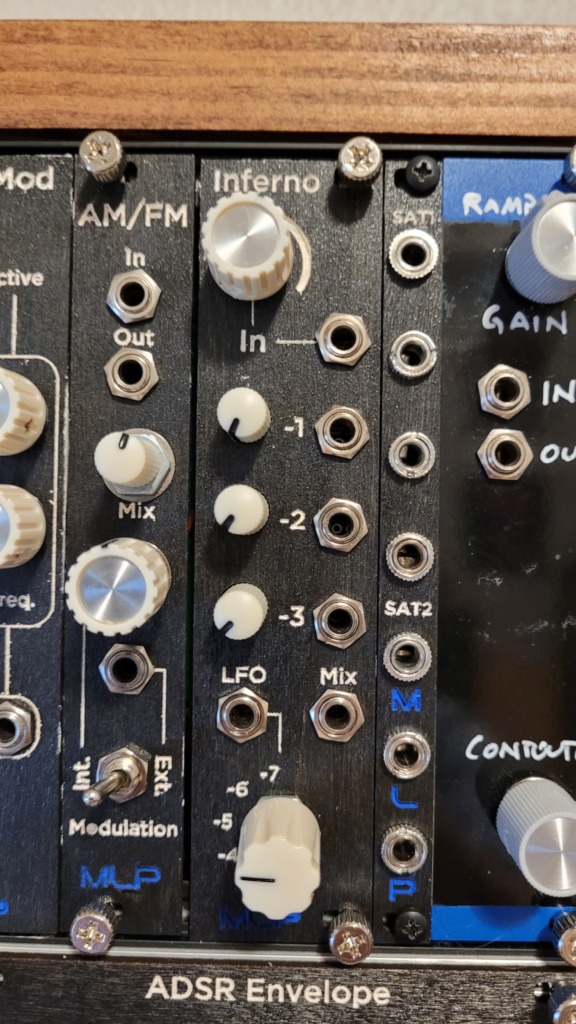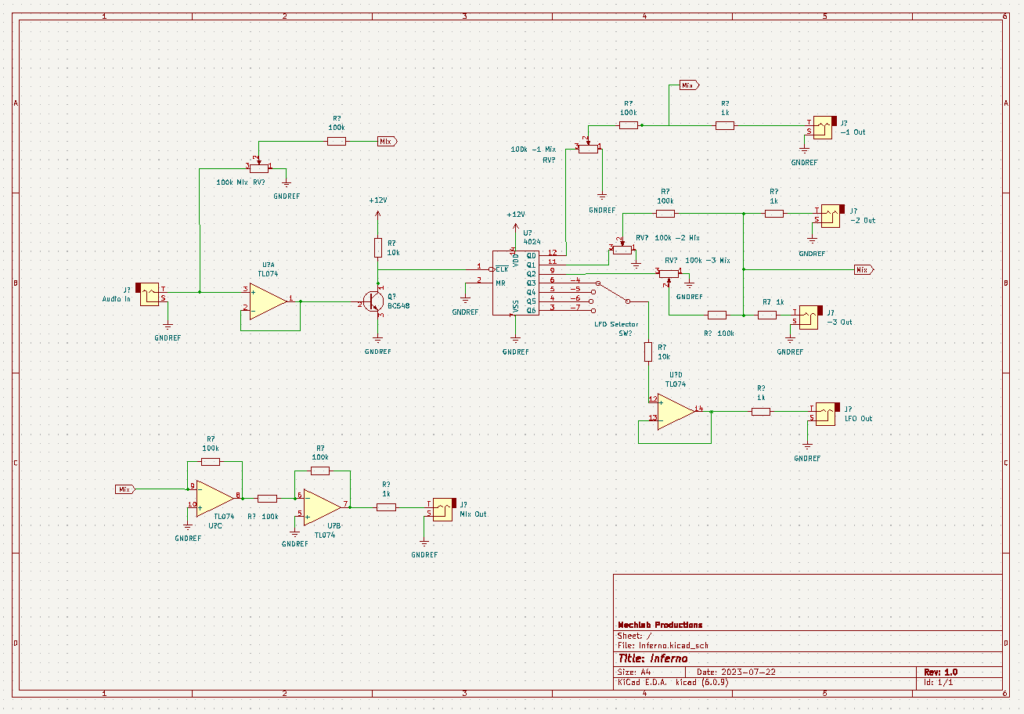
How far down does the inferno go? Well… Ours isn’t as deep as Dante’s, but seven levels is still pretty deep.
Inferno is a frequency divider that creates square wave outputs* at 1, 2, 3, 4, 5, 6 and 7 octaves below the original input signal. Based on a CD4024, and some basic clock divider concepts**, Inferno is serious about adding bottom end to your sound source.
The -1, -2 and -3 outputs are available individually, or at a buffered mix output. Use the pots to dial in the desired amount of each octave for the mix, or patch different octaves out on their own journeys around your modular. Depending on the frequency of the input, octaves below this start to divide down out of the audio range. -4, -5, -6 and -7 octaves are available as a selectable LFO output.
* Based on how the CD4024 works, all inputs waveforms end up squared off in the division process.
** Technically, there’s no reason you couldn’t use Inferno as a clock divider. The concept is the same: Divide the input frequency.
Schematic
As with any schematic found on the internet, exercise caution when building. Test the build before plugging it into your case. If you find mistakes in the schematic, or you have recommendations for improving the design, feel free to contact us and let us know.

BOM
- Resistors
- 1k (5)
- 10k (2)
- 100k (7)
- Potentiometers
- 100k (4)
- Transistors
- BC548 (1)
- ICs
- TL074 (1)
- CD4024 (1)
- Audio jacks (6)
- 4-position rotary switch (1)

Leave a Reply